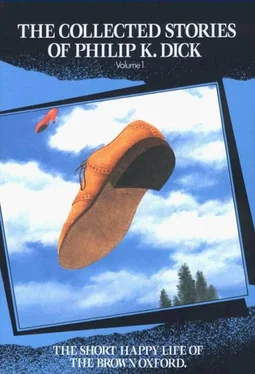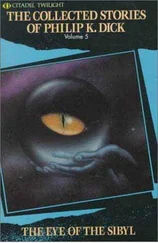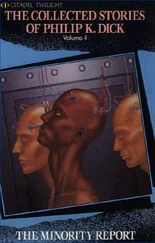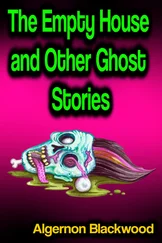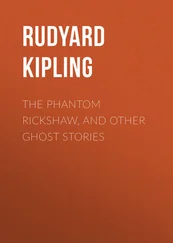“Something in the park, like yesterday. Something attacked her Nanny. Destroyed her! I can’t get the story exactly straight, but something black, something huge and black … it must have been another Nanny.”
Casworthy’s jaw slowly jutted out. His thickset face turned ugly dark red, a deep unwholesome flush that rose ominously and settled in place. Abruptly, he turned on his heel.
“Where are you going?” his wife fluttered nervously.
The paunchy, red-faced man stalked rapidly down the walk toward his sleek surface cruiser, already reaching for the door handle.
“I’m going to shop for another Nanny,” he muttered. “The best damn Nanny I can get. Even if I have to go to a hundred stores. I want the best—and the biggest.”
“But, dear,” his wife began, hurrying apprehensively after him, “can we really afford it?” Wringing her hands together anxiously, she raced on: “I mean, wouldn’t it be better to wait? Until you’ve had time to think it over, perhaps. Maybe later on, when you’re a little more—calm.”
But Andrew Casworthy wasn’t listening. Already the surface cruiser boiled with quick, eager life, ready to leap forward. “Nobody’s going to get ahead of me,” he said grimly, his heavy lips twitching. “I’ll show them, all of them. Even if I have to get a new size designed. Even if I have to get one of those manufacturers to turn out a new model for me!”
And, oddly, he knew one of them would.
All notes in italics are by Philip K. Dick. The year when the note was written appears in parentheses following the note. Most of these notes were written as story notes for the collections THE BEST OF PHILIP K. DICK (published 1977) and THE GOLDEN MAN (published 1980). A few were written at the request of editors publishing or reprinting a PKD story in a book or magazine. The first entry below is from an introduction written for the collection THE PRESERVING MACHINE.
When there is a date following the name of a story, it is the date the manuscript of that story was first received by Dick’s agent, per the records of the Scott Meredith Literary Agency. Absence of a date means no record is available. (Dick began working with the agency in mid-1952.) The name of a magazine followed by a month and year indicates the first published appearance of a story. An alternate name following a story indicates Dick’s original name for the story, as shown in the agency records.
These five volumes include all of Philip K. Dick’s short fiction, with the exception of short novels later published as or included in novels, childhood writings, and unpublished writings for which manuscripts have not been found. The stories are arranged as closely as possible in chronological order of composition; research for this chronology was done by Gregg Rickman and Paul Williams.
The difference between a short story and a novel comes to this: a short story may deal with murder; a novel deals with the murderer, and his actions stem from a psyche which, if the writer knows his craft, he has previously presented. The difference, therefore, between a novel and a short story is not length; for example, William Styron’s The Long March is now published as a “short novel” whereas originally in Discovery it was published as a “long story.” This means that if you read it in Discovery you are reading a story, but if you pick up the paperback version you are reading a novel. So much for that.
There is one restriction in a novel not found in short stories: the requirement that the protagonist be liked enough or familiar enough to the reader so that, whatever the protago nist does, the readers would also do, under the same circumstances… or, in the case of escapist fiction, would like to do. In a story it is not necessary to create such a reader identification character because (one) there is not enough room for such background mate rial in a short story and (two) since the emphasis is on the deed, not the doer, it really does not matter—within reasonable limits, of course— who in a story commits the murder. In a story, you learn about the characters from what they do; in a novel it is the other way around: you have your characters and then they do something idiosyncratic, emanating from their unique natures. So it can be said that events in a novel are unique—not found in other writings; but the same events occur over and over again in stories, until, at last, a sort of code language is built up between the reader and the author. I am not sure that this is bad by any means.
Further, a novel—in particular the sf novel—creates an entire world, with countless petty details—petty, perhaps, to the characters in the novel, but vital for the reader to know, since out of these manifold details his comprehension of the entire fictional world is obtained. In a story, on the other hand, you are in a future world when soap operas come at you from every wall in the room… as Ray Bradbury once described. That one fact alone catapults the story out of mainstream fiction and into sf.
What an sf story really requires is the initial premise which cuts it off entirely from our present world. This break must be made in the reading of, and the writing of, all good fiction… a made-up world must be presented. But there is much more pressure on an sf writer, for the break is far greater than in, say, Paul’s Case or Big Blonde— two varieties of mainstream fiction which will always be with us.
It is in sf stories that sf action occurs; it is in sf novels that worlds occur. The stories in this collection are a series of events. Crisis is the key to story-writing, a sort of brinkmanship in which the author mires his characters in happenings so sticky as to seem impossible of solution. And then he gets them out… usually. He can get them out; that’s what matters. But in a novel the actions are so deeply rooted in the personality of the main character that to extricate him the author would have to go back and rewrite his character. This need not happen in a story, especially a short one (such long, long stories as Thomas Mann’s Death in Venice are, like the Styron piece, really short novels). The implication of all this makes clear why some sf writers can write stories but not novels, or novels but not stories. It is because anything can happen in a story; the author merely tailors his character to the event. So, in terms of actions and events, the story is far less restrictive to the author than is a novel. As a writer builds up a novel-length piece it slowly begins to imprison him, to take away his freedom; his own characters are taking over and doing what they want to do—not what he would like them to do. This is on one hand the strength of the novel and on the other, its weakness. (1968)
STABILITY written 1947 or earlier [previously unpublished].
ROOG written 11/51. Fantasy & Science Fiction, Feb 1953. [First sale.]
The first thing you do when you sell your first story is phone up your best friend and tell him. Whereupon he hangs up on you, which puzzles you until you realize that he is trying to sell stories, too, and hasn ‘t managed to do it. That sobers you, that reaction. But then when your wife comes home you tell her, and she doesn ‘t hang up on you; she is very pleased and excited. At the time I sold Roog to Anthony Boucher at Fantasy and Science Fiction I was managing a record store part time and writing part time. If anyone asked me what I did I always said “I’m a writer.” This was in Berkeley, in 1951. Everybody was a writer. No one had ever sold anything. In fact most of the people I knew believed it to be crass and undignified to submit a story to a magazine; you wrote it, read it aloud to your friends, and finally it was forgotten. That was Berkeley in those days.
Читать дальше
